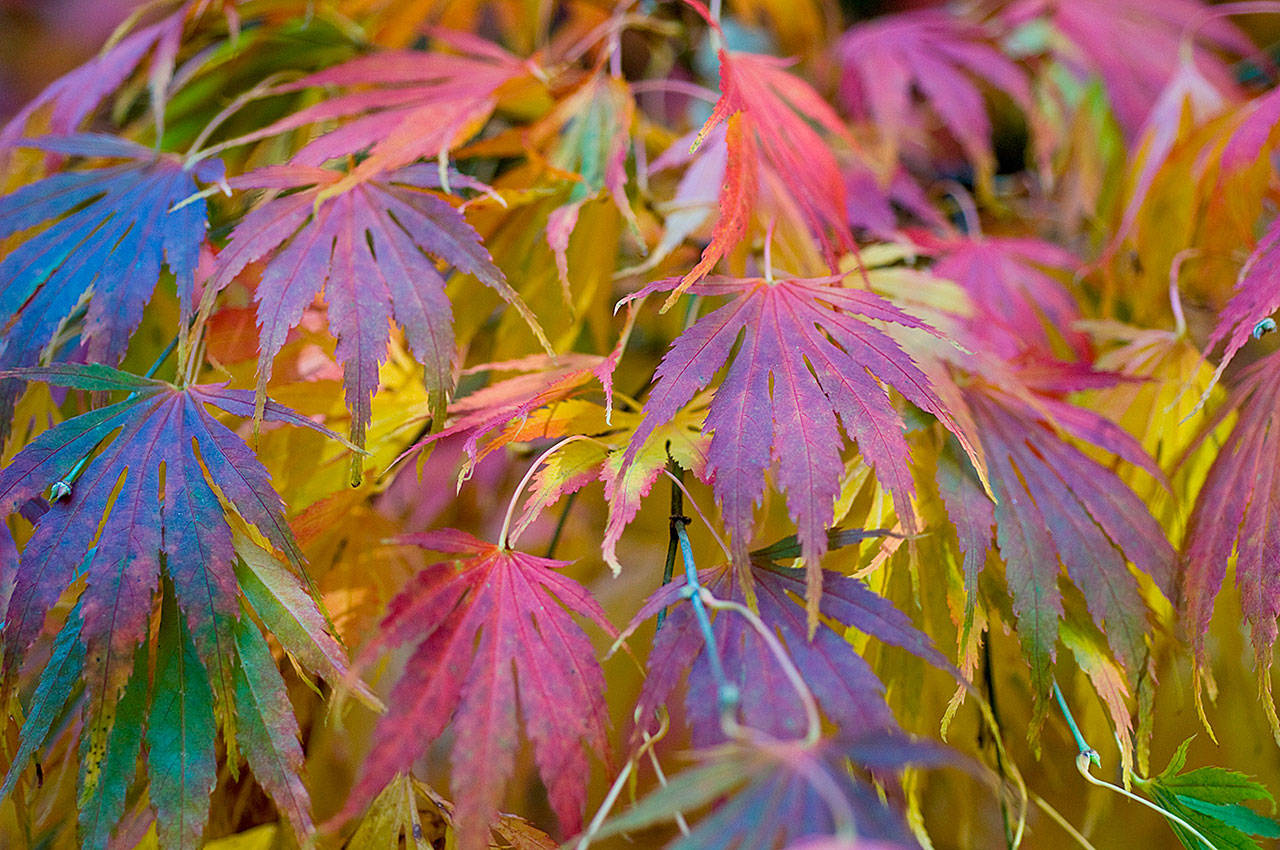This week’s The Whistling Gardener column is written by Sunnyside Nursery’s Trevor Cameron.
By Trevor Cameron, special to The Herald
One of my first plant addictions, that began years ago and will never be cured, is an affinity for all things Japanese maple.
I just don’t see how anyone can pass on a maple! Not only are they stunning architectural plant specimens to admire, but they always have outstanding fall color as well.
Three main species of Japanese maple to use are acer palmatum (typical garden maple varieties), acer japonicum (downy maples) and acer shirawasawanum (full moon maples).
There are many beautiful varieties available to home gardeners from all these species that come in a myriad of colors and textures to surprise even the pickiest of plant people. With hundreds of distinct flavors around, there truly is a maple for every spot in the garden.
Japanese maples are extremely easy to grow, if given the proper growing conditions.
No. 1 around our Pacific Northwest gardens is drainage. Good drainage equals great Japanese maple specimens. These trees make great understory specimens and also stand-alone focal points.
Most will thrive in partial shade with half-day sun, but pay attention to the variety you choose — some take all-day sun and others like only morning or dappled sun to shade.
For example, red upright growers like “Bloodgood,” “Fireglow,” “Twombley’s Red Sentinel” and “Moonfire” will take full sun. Striking variegated ones like “Tiger Rose,” “Floating Cloud,” “Peaches and Cream” and the “Ghost” series of Japanese maples prefer protection from scorching afternoon sun.
Then there are the lace leaf varieties — the beautiful mounding/weeping specimens we see all around the area. Bright reds and purples like sun and some nice green and variegated ones go for partial shade. Don’t forget about these. If it were up to me, every yard would have a lace leaf maple.
Many customers call me their “plant enabler” and “maple dealer” — both terms I am frankly proud of. Folks simply stop in to the nursery and look for the ones that catch their eye for color and structure, feeding their own maple addictions.
Varieties like “Shindeshojo,” “Orange Dream,” “Akane” and “Coral Magic,” have stunning brink pink, orange or coral foliage in spring. Some like “Tsuma Gaki” or “Murasaki Kiyohime” come out lime green with red edging. Are you craving bright yellow in spring? Try “Yellowbird,” “Summergold” or golden full moon maple (Acer shirawasawanum “Aureum”) — these beauties simply glow gold this time of year.
Now let me try to help “enable” you to become a Japanese maple lover as well. Want my secret? Try growing some fun ones in pots. If you don’t have empty pots around your garden, you can pick up a nice glazed container. Use a mixture of potting soil and compost to ensure good drainage and long term nutrition.
There are many good choices for container growing in a wide array of sizes and growth habits.
For shadier spots, try variegated ones like “Abigail Rose,” “Rainbow,” “Geisha Gone Wild” and “Hana Fubuki.” For sunny pots, try some bright red dwarfs like “Kandy Kitchen,” “Elizabeth” or “Hime shojo.” Make sure to check out “Mikawa Yatsubusa”— it’s the quintessential maple for lime green color and branching.
Container growing is a fun way to try some for a number of years and then transplant them into the garden for permanent enjoyment. And then you can get more to fill the pots you just emptied out… and thus, the addiction continues!
So please don’t call the police on me — I am just trying to help gardeners satisfy their lust for cool plants and foliage.
Trevor Cameron is a certified professional horticulturist and the general manager at Sunnyside Nursery. He can be reached at info@sunnysidenursery.net.
Japanese maples
A free class all about Japanese maples is 10 a.m. April 29 at Sunnyside Nursery, 3915 Sunnyside Blvd., Marysville. For more information, visit www.sunnysidenursery.net.
Talk to us
> Give us your news tips.
> Send us a letter to the editor.
> More Herald contact information.

























